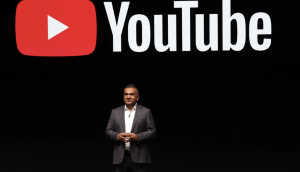The numbers are in, and they say that streaming is mainstream, TV is on the decline and wearables have a bright future ahead of them.
That’s according to the newest report from the Media Technology Monitor (MTM). The MTM’s technology penetration report for the English Language market is the first set of data released for the spring of 2017, and it details what kind of tech Canadians are spending more time with, what’s becoming a part of everyday life and what’s on the way out.
The MTM defines various stages of adoption rates in Canada (innovation, emerging, expanding, maturing and declining) by where they fall in terms of growth rate over the years. In the innovation stages, the trends are mainly adopted by tech enthusiasts, and adopters slowly get in on the game until the maturation stage, when the conservatives begin to come around. Declines occur when alternatives begin to emerge.
Here’s where today’s tech stands.
What’s up-and-coming?
Despite the popularity of Netflix and other streamers, “TV My Way” — the term MTM uses to describe people who don’t have any pay TV or over-the-air service at all — still only sits at 14%. The explanation? Many people who subscribe to Netflix, Amazon and others also still have some form of pay TV.
Unsurprisingly, however, younger Canadians over-index on “TV My Way,” with 28% of the 18-to-34 year olds falling into this bracket, as well as 28% of students. And, the study noted, “TV My Way” has doubled since fall 2013, when it sat at 7%, officially placing it in the “emerging” category.
Wearables are also identified as emerging, currently at 22% penetration. Despite the initial buzz around the releases of smartwatches like the Apple Watch, the most popular wearable is the Fitbit, which 14% of Canadians own. Despite what some say is a slow start to the smartwatch trend, according to this study, Canada is ahead of the U.S.for wearables — a recent eMarketer study put wearables at 17.6% penetration in the U.S. Canada has also seen major growth in the area of wearables, up from 12% in fall 2015.
What’s expanding?
One of the biggest expanding areas for tech is internet through television. The use of internet on a TV set through any means currently sits at 51% penetration, nearly doubling since fall 2013 (26%). This includes growth in smart TVs (now at 45% penetration, up from 26% in fall 2013).
Connected TV devices are also expanding, with Roku at 5% penetration (it entered the market in 2012, but MTM did not measure its penetration in 2013) and Chromecast at 8% (at 0.1% in 2013). While AppleTV has lessened in penetration from fall 2016 to this spring (12% from 15%), it is still showing a rise over a longer period of time, up from 8% in 2013.
The biggest driver for this trend, according to this report, is online TV, which, not coincidentally, are also identified as “expanding” (even though internet video overall has reached a point of saturation). More than half Canadian Anglophones now subscribe to Netflix (53%), up from 29% in fall 2013. New-to-market player Amazon Prime Video reaches an estimated 4% of Canadians, and Bell Media’s CraveTV sits at just under 10%.
What’s declining?
All four categories trending on the decline came from the TV world: overall TV subscriptions, cable TV subscriptions, satellite subscriptions and over-the-air TV users.
While pay TV subscriptions as a whole sit at 73%, a slight decline from 75% in the fall of 2016 (and from 77% in spring 2016). Cable is still the number-one delivery method for pay TV at 34%, a minor drop from 36% in the fall. Satellite remained steady at 17%, but has seen a big fall since its peak in 2011, when it had a penetration rate of 27%.
Over-the-air TV sits at 7%, and although it remains unchanged from 2016, the number has experienced an overall steady decline.
What’s maturing?
Many technologies that emerged in the mainstream in the last decade are reaching a point of maturation — or, according to the study, saturation. For technology, smartphones and cell phones have maintained a steady penetration for several years (cell phones are currently at 89% penetration, up only 4% over the last four years). However, currently, only 8% of Canadians own a basic cell phone, and the study predicts that within several years time, all cell phones will be smartphones.
Tablets are also in the maturation stage, having only grown to 57% penetration from 55% in the spring of 2016. While the iPad is still the most popular, the study notes that the Samsung Galaxy is making up ground, and one-quarter of tablet users favour this brand.
Online streaming audio (both music and radio) and internet video are also in this stage — 70% of Canadians stream audio of some kind (up from 64% in fall 2013), while overall internet video consumption sits at 83% (up from 76% in fall 2013).
Fibre optic TV subscriptions are also reaching a point of maturation, although it is the only form of television subscription that is currently not declining. It currently boasts a penetration rate of 23%. Home internet has remained nearly unchanged since 2013, sitting at 91% penetration.
Image: Shutterstock























